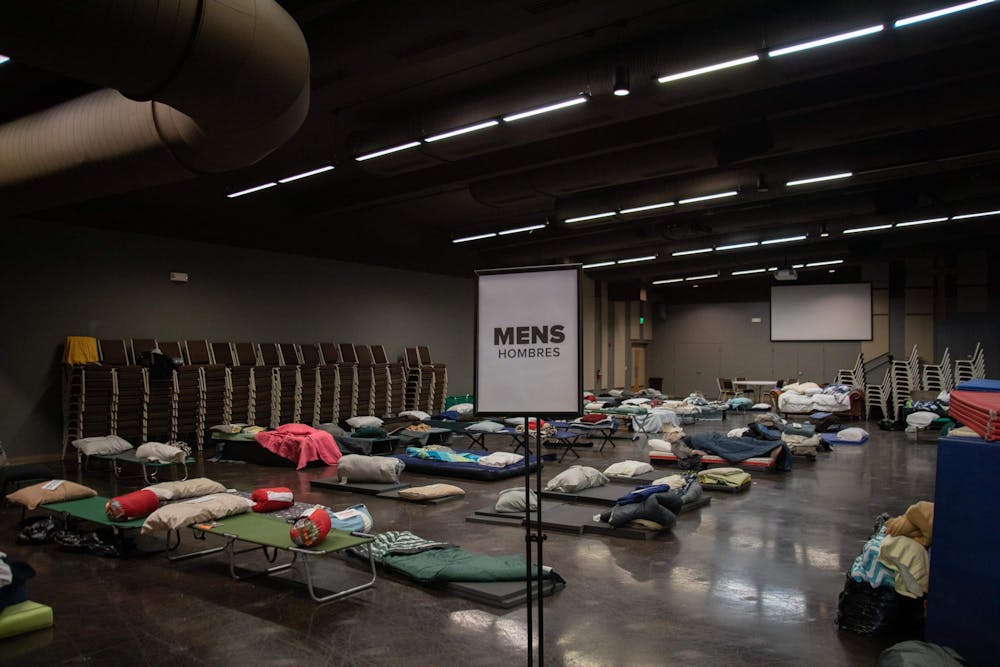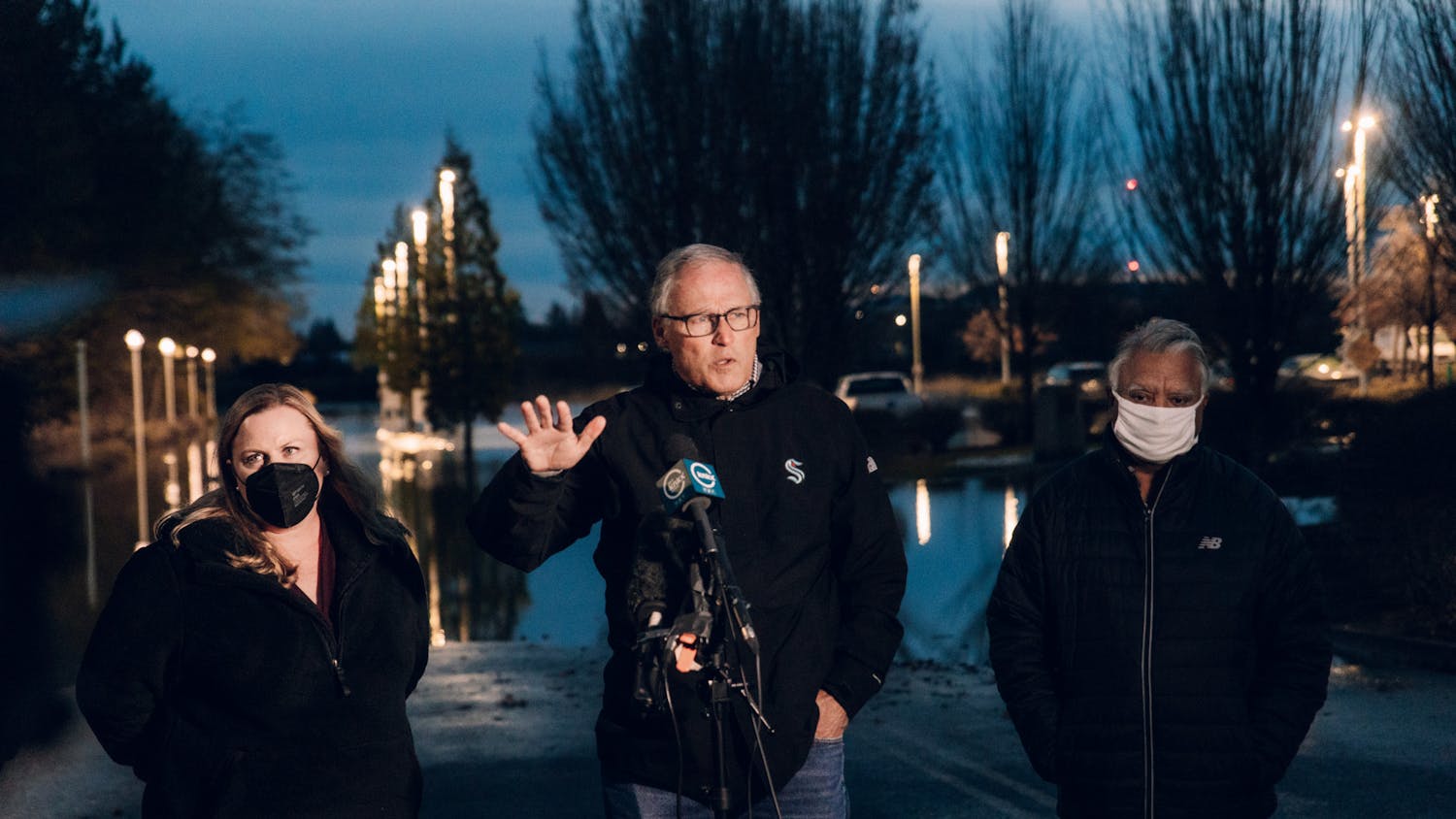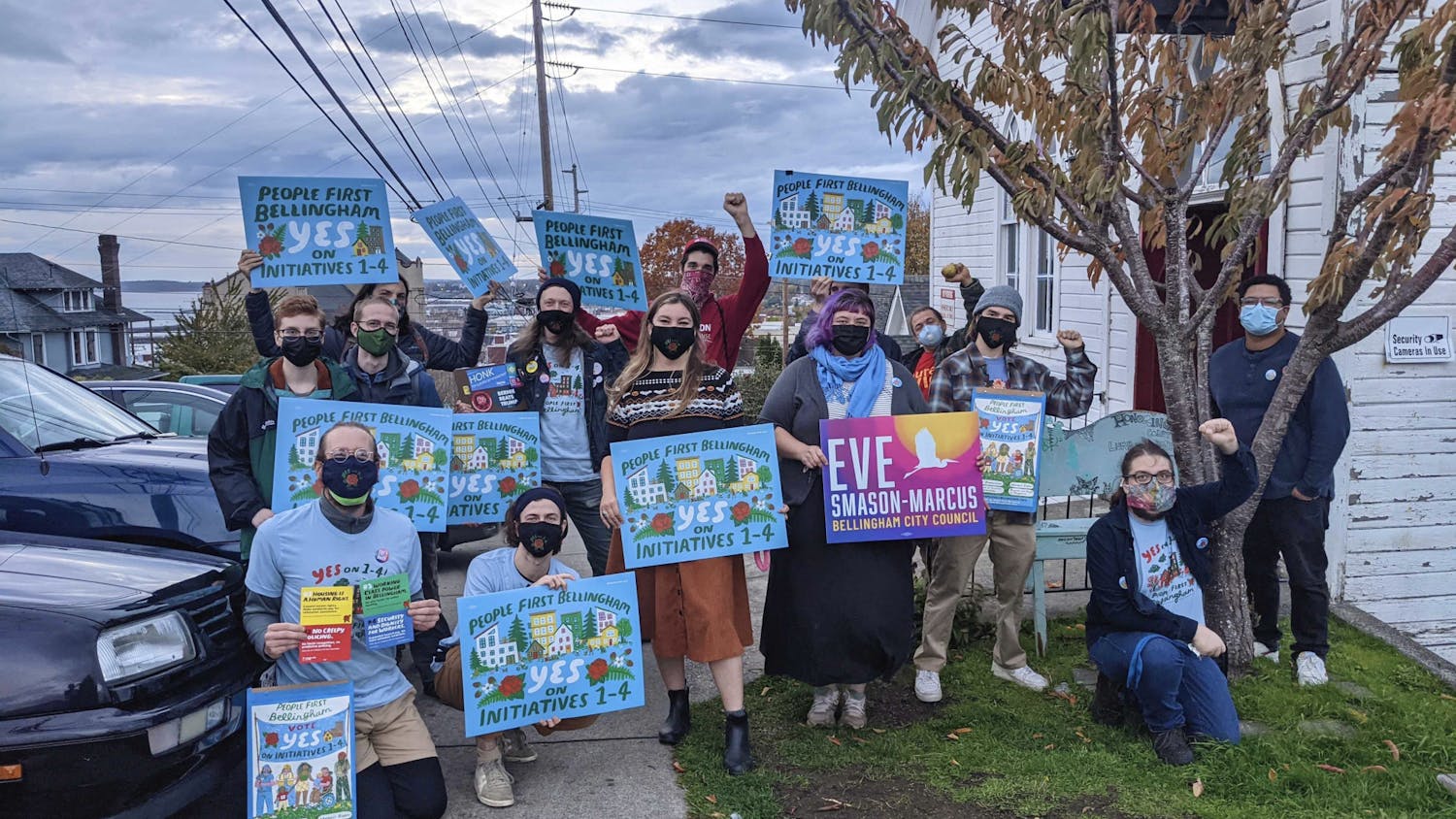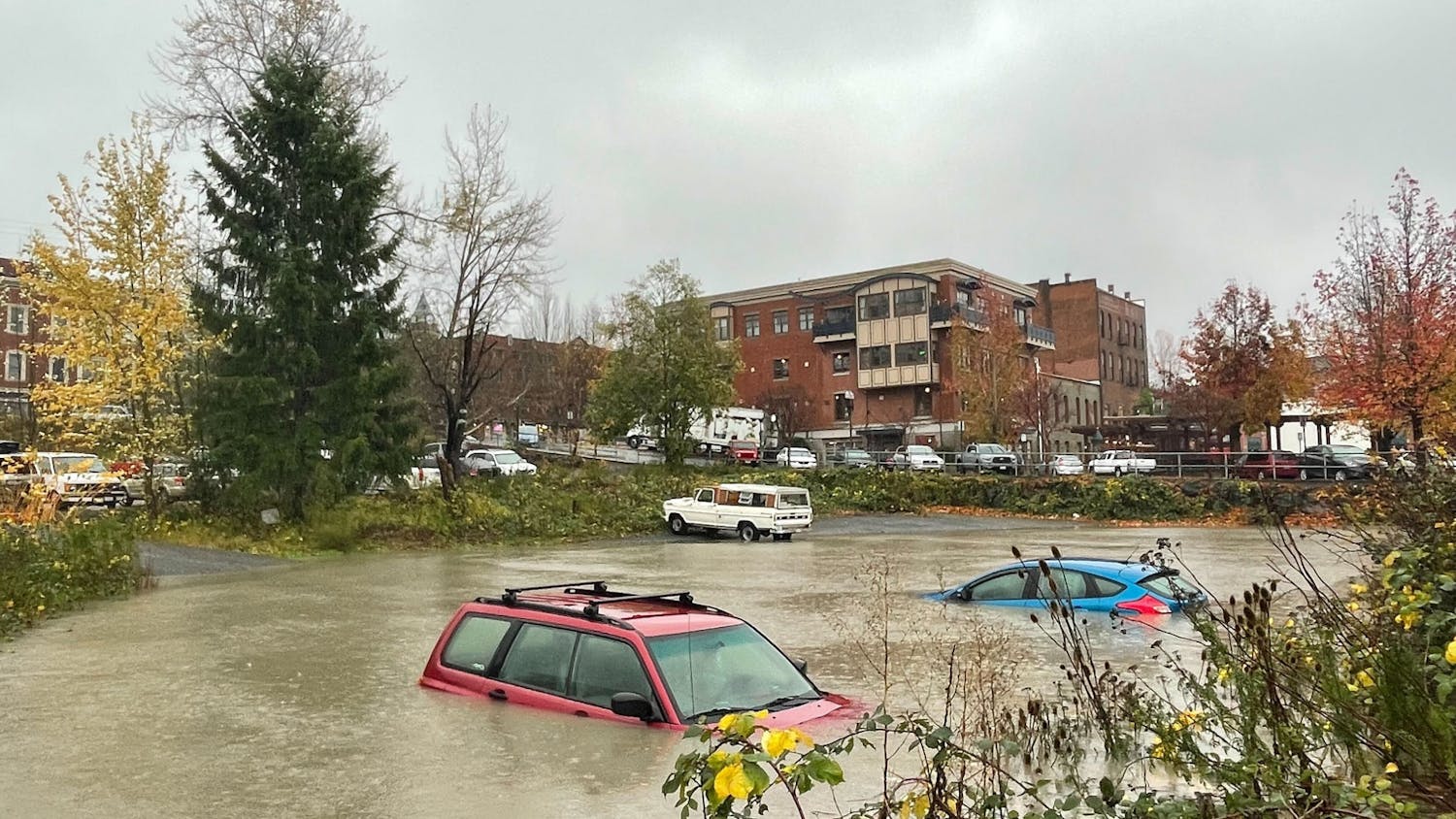After approximately 500 people were displaced across Whatcom County during the Nov. 14 and 15 floods, county governments and communities worked together to provide short-term relief through emergency shelters and donations, but long-term housing solutions to house evacuees still seem elusive.
Emergency flood shelters were assembled by the community and the Whatcom County Sheriff’s Office, such as North County Christ The King church, Sonlight Church and the Lynden Fairgrounds, in order to provide immediate solutions.
At North County Christ The King church, or NCCTK, in Lynden, setting up the church as a shelter was a decision made within one day. Upon hearing about the flood, church leaders opened the space for soup, Wi-Fi and charging stations, thinking their services would be needed in the afternoon. NCCTK decided to shelter people overnight when they realized how extensive the damage was, said Ramona Stumpf, director of Life Ministry at NCCTK.
During their week of operations, 530 people came through NCCTK utilizing the church’s shelter, or picking up community donated supplies. With the help of numerous volunteers, the church sheltered 70 evacuees at their fullest night, and 21 at their lowest.
At first, NCCTK had no cots to offer guests, but community members and later Red Cross offered air mattresses, cots, blankets and pillows to support their effort.
These donated supplies along with diapers, wipes, clothing, shoes and formula began piling up as community members rushed to provide for those in need.
“We had to put the word out a couple of times, please don't bring any more, we don't have room for it,” Stumpf said.
The shelter offered separate men’s, women’s and family areas and three meals a day provided by local restaurants, community members and the church.
“Very little was needed from us,” said Don Kok, executive director for Project Hope, a local food bank.
A couple people experiencing houselessness who were known to the community also took shelter at NCCTK, Stumpf said. Though the shelter was intended for flood victims, it was not a rule.
Matt Bateman, pastor of Family Ministries at NCCTK, assembled a meeting on Nov. 17 with local city mayors, school districts and churches, where the community developed a plan for continued flood relief and created Whatcom Strong.
Whatcom Strong is an organization that dispatches volunteers for flood relief services, collects donations, posts flood updates and collects property damage reports from flood victims.
Whatcom Strong is part of the county’s efforts to offer continued relief for displaced and affected people, along with the county’s transfer of evacuees from emergency shelters like NCCTK, into longer term housing.
“We decided we’d try and make it through the weekend and then hope that there was a better solution for them, and that's what seemed to open up,” Stumpf said.
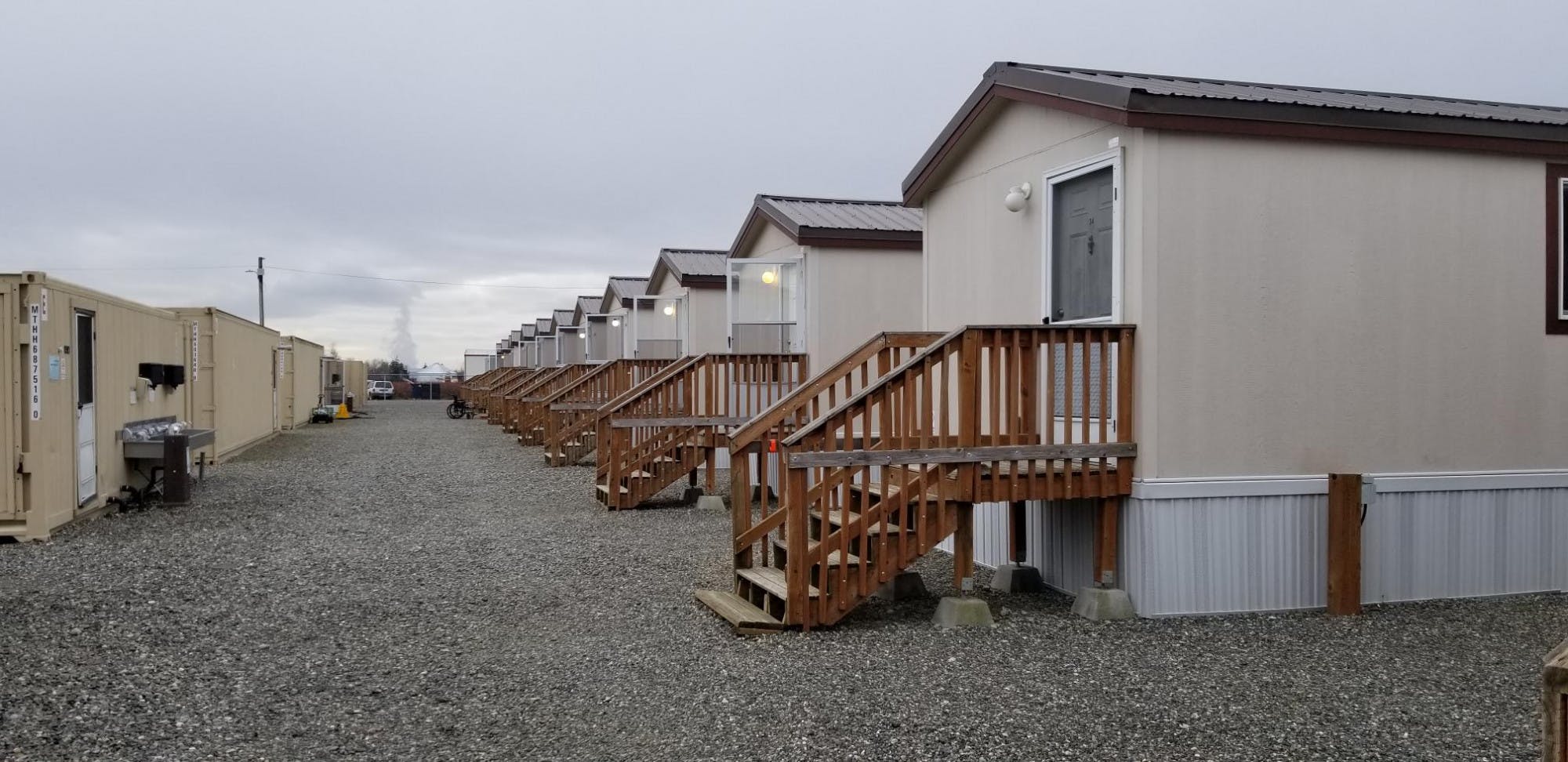
Sarbanand Farms opened its doors to evacuees being transferred from short-term emergency shelters like North County Christ the King Church a week after the flooding of Nov. 14 and 15. The housing is normally reserved for seasonal and migrant workers who come to the farm during spring and summer. // Photo courtesy of the American Red Cross
A week after the initial flooding, The Whatcom County Sheriff’s Office Department of Emergency Response set up Lynden Fairgrounds as an emergency shelter, operated by the Red Cross, said Pam Brady, the office’s public information officer.
At the Lynden shelter, the Red Cross provides meals, snacks, comfort kits, emotional support, spiritual care, family reunification and relief supplies, and they have sheltered 10 individuals as evacuees find alternative shelter through family and friends, said Abby Lutz, communications manager at the Red Cross.
Evacuees were also transferred to Sarbanand Farms in Lynden, being put up in farm housing occupied by seasonal workers in the spring and summer. The Red Cross is also supplying Sarbanand Farms with daily meals.
Impact on the houseless
The floods impacted Whatcom County residents beyond just those that were housed, as was evidenced by an increase in activity at the Lighthouse Mission’s Base Camp in Bellingham.
The shelter for people experiencing houselessness saw a large influx of guests seeking shelter in the week following the floods, with the guest count reaching 219, said Bridget Reeves, COO of the Lighthouse Mission.
Displaced people sought shelter at Base Camp after the car they were living in was flooded. Some entered carrying numerous animals with them that were checked into the Whatcom Humane Society.
“We have also seen others that were in camp, and they were camping by rivers or creeks, and their campsites were flooded; their stuff was blown everywhere,” Reeves said, drawing attention to the houseless folk outside of Base Camp. “We've been able to make contact with quite a few people with our outreach vans, our Street Connect Program.”
Base Camp was able to provide dry blankets and shelter at their newly opened overflow shelter at 1013 W. Holly St., in addition to providing the Sonlight shelter with their shower truck.
John Gargett, deputy director of Whatcom County Sheriff’s Office division of emergency management, said in a media briefing on Nov. 23 the sheriff’s office does not have an estimate of houseless folk affected by the floods but has made efforts to reach out and transport them to Base Camp.
Gargett assumes the number of affected houseless folk is small and told The Front that this was not an issue in cities like Sumas and Everson.
Long term solutions
The Whatcom County Sheriff’s Office says it’s too soon to know how soon displaced people will be able to enter their houses following rebuilding and refurbishing.
“Some of the people, in the 2020 flood in February, they had just moved in a few months ago and completed their repairs and everything, and they're starting to enjoy their home back,” said County Executive Satpal Sidhu at the Nov. 23 media briefing. “And now this happens to them again.”
While the community looks for local long term housing solutions, flood victims await federal relief funds through FEMA, which need to hit a certain benchmark of documented needs before being dispensed. Whatcom County is asking its residents — both renters and homeowners — to report all flood damage using an online form. People who need help with the form can call the Damage Assessment Line at 360-788-5311.
Gargett estimates the total damage in Whatcom County to be $50 million, with damages to housing accounting for $15-20 million.
“We encourage folks to document all the damage that's been caused,” Congresswoman Suzan DelBene said at the briefing. “That's put together collectively through the county and the state, but then it would be up to the governor to make a request for a federal declaration.”
Gargett, Sidhu and DelBene all emphasized that their priority is housing when it comes to the county’s flood relief plan.
As part of the community’s attempt at long term housing solutions, Don Kok and Project Hope were tasked with leading the effort at the multi-city meeting on Nov 17.
“Through networking, the churches were able to provide housing through some of their members,” Kok said. “Any number of people were offered safe places, through homes, or the use of RVs, RV sites; the [Kampgrounds of America] here in Lynden has offered a number of sites.”
The Red Cross plans to stay open as long as there is community need for shelter as well.
“Recovery is a process, and we will stand by families impacted by this flood event for as long as they need,” Lutz said. “Everyone is welcome in Red Cross shelters. Our shelters are a safe place for people of all backgrounds, including those who didn’t have stable housing before a disaster.”
Each member of the flood relief effort that The Front spoke to expressed their concern for lasting long term solutions and emphasized that the continuity of many current relief resources are still unsolidified.
But for now, the community makes strides to provide for those in need.
“It's been remarkable how those communities have been involved; how neighbors, churches, local governments have just pivoted to meet needs,” Kok said.
Kai is a senior at Western and has decided to finish his undergrad journey with News/Editorial Journalism. His focus is on social issues and is committed to the people within these stories.


